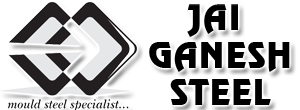Tools and alloy steel | High speed steel | P20 steel | Alloy steel plates
(HIGH SPEED STEEL, HCHCR STEEL, P20 STEEL)
BEST TOOLS AND ALLOY STEEL SUPPLIERS IN GURUGRAM, FARIDABAD, KUNDALI, MANESAR, AND DELHI.
BY JAIGANESHSTEEL
tools alloy steel,high speed steel,p20 steel,alloy steel plates,tool steel grades,tool steel suppliers,h13 tool steel,tool steel properties,h13 steel
WHAT ARE TOOLS AND ALLOY STEEL?
Tools and alloy steel refers to a number of carbon and also alloy steels.
specifically, they are well-desirable for tools making.
The suitability of the tool and alloy steel comes from its distinctive hardness.
and resistance to abrasion and also deformation.
At elevated temperatures, they have the capability to keep a cutting edge.
As a result, tools and alloy steel are desirable for the usage of the shaping of other materials.
With having 0.5% and 1.5% of carbon content, tool and alloy steel are manufactured.
Some grades have additional resistance to corrosion because of added chemical properties, such as vanadium.
on the other hand, with certain grades, the manganese content is restricted in order to reduce the ability to crack while water quenching.
Other grades provide various methods other than water to quench the material, such as oil.
under carefully controlled circumstances.
to produce the required first-rate product.
Due to the existence of carbides in their matrix, it plays a major role in the traits of tools and alloy steel.

tools alloy steel,high speed steel,p20 steel,alloy steel plates,tool steel grades,tool steel suppliers,h13 tool steel,tool steel properties,h13 steel
WHAT ARE THE FOUR FOREMOST ALLOYING ELEMENTS IN THE TOOLS AND ALLOY STEEL?
The four foremost alloying steel elements that form carbides in the tools and alloy steel are:-
- Tungsten
- Chromium
- Vanadium
- Molybdenum
The dissolution rate of different carbides into the austenite form of the iron.
It determines the excessive-temperature overall performance of the steel.
that was spoken well ” slower is better, during the making of a heat-resistance steel”
For adequate performance, proper heat treatment of these tools and alloy steel is important.
During water quenching, the presence of manganese content is often kept low.
in order to minimize the possibility of cracking.
HOW MANY GROUPS OF TOOLS AND ALLOY STEEL WORK?
There are six groups of tool and alloy steel are:-
- Water-hardening
- Cold -work
- Shock-resistant
- High-speed
- Hot-work
- Special purpose
WATER-HARDENING
W-group tool steel gets its call from its defining assets of having to be water quenched.
W-grade steel is essentially excessive carbon plane-carbon steel. This institution of tool steel is the maximum typically used tool steel because of its low price compared to others.
The hardness of w-group tool steels is extended by alloying with manganese, silicon, and molybdenum.
more than 0.22% of vanadium is used to keep high-quality grain sizes at some stage in heat treating.
COLD-WORK
The cold-work tool steels comprise the O-series (oil-hardening), the A-series (air-hardening), and the D series ”excessive carbon-chromium”. They’re used in the production of large elements or components that require minimum distortion in the course of hardening. They are often used to make knife blades have and got high surface hardness.
SHOCK-RESISTANCE
Shock-resistance institution tool steels are designed to face up to shock at both low and excessive temperatures. The excessive shock resistance and properly hardenability are supplied with the aid of chromium-tungsten, silicon-molybdenum, and silicon-manganese alloying. This own family of steels shows a very high impact toughness and relatively low abrasion resistance and might obtain relatively high hardness (HRC 58/60).
HIGH-SPEED
It is much good than the older high-carbon steel tools used highly through the 1940s in that it can hold out against higher temperatures without dropping its temper.
It is frequently used in power-saw blades and drill bits.
These belongings permits HSS (HIGH Spee STEEL) to cut faster than high carbon steel, subsequently the name high-speed steel.
HOT-WORKING
H-series device steels have been developed for strength and hardness all through extended exposure to multiplied temperatures. Hot-working steels are a group of steel used to cut or give shape at excessive temperatures. These device steels are low carbon and slight to a high alloy that provides the right hot hardness and toughness and wears resistance because of a sizable quantity of carbide.
SPECIAL PURPOSES
F-TYPE tool steel is water hardened and appreciably and much more wear-resistant than w-type tool steel.
L-TYPE tool steel is short for low alloy special cause tool steel.
The toughness of L6 is extremely high.
P-TYPE tool steel is short for plastic mold steels. created to meet the needs of zinc die casting and plastic injection molding dies. Not unusual metal grades like p20, 420, and so forth.
The choice of selecting the groups depends upon different criteria:-
- Cost
- Working temperature
- Required surface hardness
- Strength
- Shock resistance
- Toughness requirements.
When the service condition is more critical, like:-
- Higher temperature
- Abrasiveness
- Corrosiveness
- Loading
The tool and alloy steel require
- higher amount of the alloy content and
- consequent amount of carbides
WHAT ARE THE USES OF THE TOOLS AND ALLOY STEEL?
Tools and alloy steel is used for various purposes:-
- Cutting
- Pressing
- Extruding
- Coining of metals and other materials.
Also used for machining metals, plastics, and wood.
also can use for stamping of computer parts from metal sheets.
They’re typically melted in furnaces and processed to offer them properties required for shaping different metals into useful components.
Due to tool and alloy steel resistance to abrasion.
which is an supreme criterion for a mold.
it is widely used for the production of injection molds.
tools alloy steel,high speed steel,p20 steel,alloy steel plates,tool steel grades,tool steel suppliers,h13 tool steel,tool steel properties,h13 steel
FOR TOOLS AND ALLOY STEEL.
CONTACT ‘TOOLS AND ALLOY STEEL SUPPLIER IN GURUGRAM’:- +91-11-45872912.
CONTACT ‘TOOLS AND ALLOY STEEL SUPPLIER IN MANESAR’ +91-9810710299.
CONTACT ‘TOOLS AND ALLOY STEEL SUPPLIER IN KUNDLI’ +91-9015270017.

